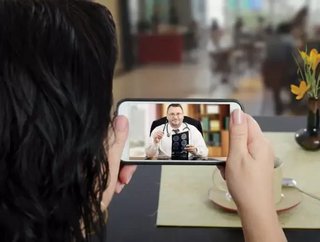Telemedicine is booming through increased demands for virtual mobile health services

The healthcare industry is becoming increasingly consumer-centric, where health providers are vying to deliver exceptional care which is patient-focused and delivers positive patient experiences across the board.
The telemedicine market is part of this drive, where healthcare is steadily adopting a patient-as-consumer model, leading to significant growth. Patients want the ability to access vital healthcare support anytime, anywhere, through face-to-face contact or through digital tools and medical devices at reduced costs.
Tech start-ups, such as HeyDoctor have launched a telemedicine app which will enable physicians to prescribe certain medicines through text messaging – a signal in where the healthcare industry is going.
According to Crystal Market Research, the global telemedicine market is expected to be around $3bn by 2025. The key players are focusing on product innovation and development to introduce next generation products which will assist physicians in remotely interacting with patients more efficiently.
The telemedicine market is especially significant within the US. In Texas, the Medical Board has recently issued a new licensing regulation surrounding the technology, which will emnable physicians to access patients and any potential symptoms through the use of telemedicine, which will be followed up a prescription if needed.
Related stories
- Wearable data analytics IoT market to reach $838mn by 2022
- Healthcare is a Major Target for Cybercriminals
- Humana acquires health provider Kindred Healthcare for $4bn
The technology will support a growing aging population, and support and improve clinical outcomes. The VA Hospital in San Diego have implemented mHealth technology in tablets to support Veterans’ Affairs doctors in delivering world-class patient care as part of its Anywhere to Anywhere VA Healthcare initiative.
Utilising telemedicine will see the hospital provide increased healthcare access to those who cannot travel on a global scale, which will of course speed up recovery times within the monitoring of wound care and reduce healthcare costs.
“The really great thing about this is that in the past, doctors would have to visually estimate whether a wound has improved based on memory of a past image, which can sometimes be confusing when you also have to remember other patient images as well,” commented Dr. Kevin Broder, Director for the Wound Image Capture and Storage Innovation Project in a story provided by the VA. “This tablet provides recorded, accurate data to track progress.”
Additionally, healthcare provider Kaiser Permanante has been utilising telemedicine within its stroke program Expediting the Process of Evaluating and Stopping Stroke (EXPRESS). The study, which ran from 2015-2016, showed that patient access to treatment and subsequent recovery rates have improved significantly through the use of telemedicine, highlighting its advantages within the transforming industry.






